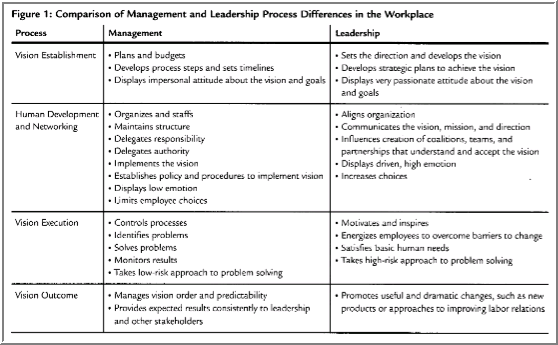Glenda Lowndes, Reference Assistant, Bronfman Business Library
Published Thursday January 9th, 2014
The history of the word “leadership” dates back several centuries and its meaning has evolved overtime (Toor & Ofori, 2008). In the nineteenth century, leadership was defined as “the state or condition of a leader”; in the twentieth century, leadership was defined as “the ability to lead”; and was then used as a synonym for “manager” (Toor & Ofori, 2008). However, today leadership is defined as “the dignity, office, or position of a leader, esp. of a political party; ability to lead; the position of a group of people leading or influencing others within a given context; the group itself; the action or influence necessary for the direction or organization of effort in a group undertaking” (Oxford English Dictionary, 2013).
There have been many discussions and research on how leadership differs from management, yet it’s not uncommon for people to perceive the terms as similar and interchangeable. John Kotter whose research focuses on leadership has stated that in an organization “management is about coping with complexity (planning, budgeting, staffing), while leadership is about coping with change (setting direction, aligning people, motivating) (Allman, 2009). In the chart below you can see the differences between Management and Leadership within the different practices in the organization (Kotterman, 2006).
The ideal goal of any organization is for one individual to have the skills of both a leader and a manager. However, this is hardly the case and usually organizations end up hiring consulting firms to teach leadership development to their employees, only to later find out, that they aren’t allowed to take a lead, which is altogether time consuming, expensive and creates tension within the organization (Toor & Ofori, 2008). In order for any organization to be successful there needs to be a mix of leaders and managers and an understanding of the differences in each role. While managers and leaders do have many differences, they share a common factor, which is attaining goals for the overall success of the organization (Zimmerman, 2001).
At Bronfman Business Library, we are celebrating the many educators and scholars that have written about leadership research throughout the years. We have set up a display in the Carol Anne Letheran Fireplace Lounge highlighting the many books and e-books that focus on the classic leadership literature, including books by John Kotter, Edger Schein and Warren Bennis.
References
Allman, S. (2009). Leadership vs. Management. Successful Meetings, 58(11), 12.
Kotterman, J. (2006). Leadership versus management: What's the difference? The Journal for Quality and Participation, 29(2), 13-17. Retrieved from http://search.proquest.com.ezproxy.library.yorku.ca/docview/219091679?accountid=15182
Toor, S., & Ofori, G. (2008). Leadership versus Management: How They Are Different, and Why. Leadership & Management In Engineering, 8(2), 61-71. doi:10.1061/(ASCE)1532-6748(2008)8:2(61)
Zimmerman, E. L. (2001). What's under the hood? The mechanics of leadership versus management. SuperVision, 62(8), 10-12. Retrieved from http://search.proquest.com.ezproxy.library.yorku.ca/docview/195597976?accountid=15182
"leadership, n.". OED Online. (2013). Oxford University Press. Retrieved from https://www.library.yorku.ca/e/resolver/id/1524251

